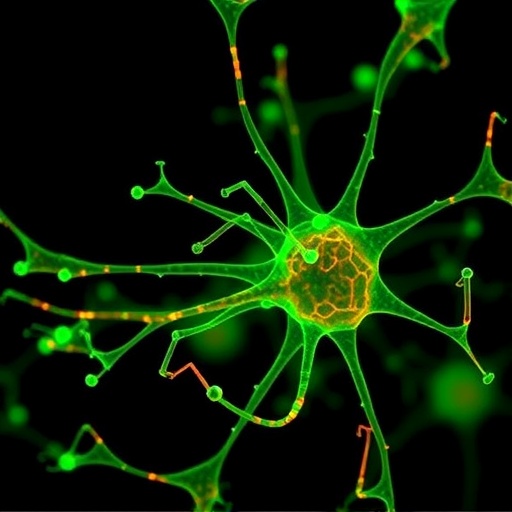In a groundbreaking study that redefines our understanding of fungal-host interactions, researchers have unraveled the nuanced role of candidalysin, a peptide toxin, in facilitating oral colonization by the opportunistic pathogen Candida albicans. The research, conducted by Fróis-Martins et al., and recently published in Nature Microbiology, presents a dynamic portrait of how candidalysin expression is finely tuned during infection, offering profound insights into the molecular ballet that enables the fungus to thrive within the complex environment of the mammalian oral cavity.
Candida albicans is a dimorphic fungus, notorious for its ability to morph between yeast and hyphal forms, a trait intimately linked with its pathogenic potential. Central to its virulence is candidalysin, a cytolytic exotoxin secreted during hyphal growth, which damages host tissues and triggers an immune response. However, until this study, the temporal regulation and functional nuances of candidalysin expression during colonization versus infection remained largely elusive.
Harnessing advanced genetic and imaging tools, the researchers employed a murine model to dissect the spatiotemporal patterns of candidalysin production. What emerged was a sophisticated expression profile: candidalysin levels dynamically fluctuate in response to local environmental cues in the oral niche, a phenomenon visualized through cutting-edge fluorescence reporter systems. This dynamic expression challenges the erstwhile notion of a static toxin deployment, suggesting a more refined strategy employed by C. albicans to balance host damage and immune evasion.
Intriguingly, candidalysin is not constitutively produced at high levels. Instead, its expression is tightly regulated, allowing C. albicans to establish a foothold within oral tissues while modulating the host immune system to avoid premature clearance. The study demonstrates that intermediate levels of candidalysin heighten the pathogen’s adhesion and invasion efficiency without provoking an overwhelming inflammatory reaction, highlighting a strategic calibration that maximizes colonization success.
Further experiments revealed that candidalysin orchestrates a pivotal cross-talk between fungal cells and host epithelial barriers. By transiently disrupting epithelial integrity, the peptide aids fungal penetration and subsequent colonization. Yet, this disruption is finely controlled to prevent catastrophic tissue damage that might mobilize an aggressive immune counterattack. Such modulation underscores candidalysin’s role not merely as a weapon but as a tool for delicate host tissue manipulation.
At the molecular level, candidalysin’s dynamic expression is influenced by host-derived signals including pH shifts, nutrient availability, and immune mediators. The fungal response to these cues is mediated through a sophisticated regulatory network involving transcription factors and signaling pathways that modulate ECE1, the gene encoding candidalysin. This transcriptional plasticity is essential for adapting to the fluctuating conditions within the oral microenvironment.
The researchers also addressed the immunological implications of candidalysin-mediated colonization. They found that candidalysin triggers a calibrated epithelial cytokine response, initiating signaling cascades that recruit immune cells while preserving tissue integrity. This balance permits Candida’s persistence by preventing both insufficient immune activation, which would allow uncontrolled colonization, and excessive inflammation, which would lead to fungal clearance.
In a remarkable series of in vivo experiments, mutant strains deficient in candidalysin production displayed impaired colonization capacity and attenuated mucosal invasion, reinforcing candidalysin’s indispensable role in oral niche adaptation. Conversely, strains expressing constitutively high levels of candidalysin induced excessive tissue damage and early clearance, underscoring the necessity of precise expression dynamics.
Beyond colonization, candidalysin’s role extends into establishing chronic fungal reservoirs within oral tissues, a factor that may underpin recurrent mucosal infections. The dynamic modulation of candidalysin allows Candida albicans to toggle between commensalism and pathogenicity, seamlessly adapting to host immunity and environmental stressors.
This study offers profound clinical relevance. By illuminating the molecular timing and regulation of candidalysin expression, it opens avenues for targeted therapeutic interventions aimed at disrupting this delicate balance to prevent fungal persistence without eliciting destructive inflammation. Such strategies could revolutionize the management of candidiasis, particularly in immunocompromised patients where oral colonization serves as a prelude to systemic infection.
Technologically, the integration of real-time reporters and precise murine infection models marks a significant advance, enabling the dissection of pathogenic strategies in a host-relevant context. This approach sets a new standard for studying fungal pathogenesis, moving beyond static snapshots to dynamic, temporal analyses that capture the real-time interplay between pathogen and host.
Notably, the findings challenge traditional paradigms that often view virulence factors as uniformly detrimental, instead painting candidalysin as a versatile modulator of host-pathogen interactions. This nuanced perspective encourages a reevaluation of other fungal toxins and their roles within complex infection landscapes.
In conclusion, the dynamic expression of candidalysin emerges as a masterstroke in Candida albicans’ evolutionary arsenal, finely balancing aggression and stealth to ensure survival and colonization. This research not only deepens our understanding of fungal biology but also highlights the intricate molecular dialogs that underpin microbial life within host ecosystems, heralding a new era of precision antifungal research.
Subject of Research: Candida albicans pathogenesis, candidalysin expression dynamics, oral colonization mechanisms
Article Title: Dynamic expression of candidalysin facilitates oral colonization of Candida albicans in mice
Article References:
Fróis-Martins, R., Lagler, J., Schille, T.B. et al. Dynamic expression of candidalysin facilitates oral colonization of Candida albicans in mice. Nat Microbiol (2025). https://doi.org/10.1038/s41564-025-02122-4
Image Credits: AI Generated




